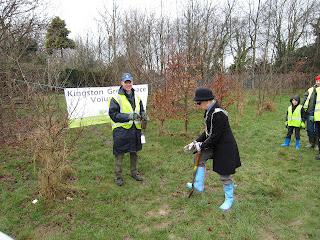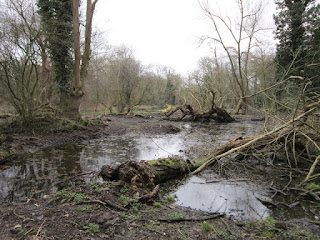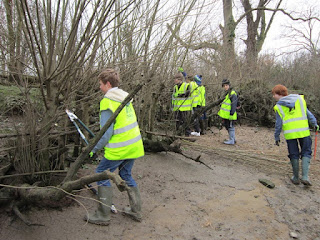A new sign was also fitted to the gate of the reserve on Fairoak Lane, as even some local people are not aware of the existence of the reserve. New benches will be located near to the ponds, a tawny owl box, made at the nearby Headley Court Defence Medical Rehabilitation Unit, will be put up in a tree, and a new interpretation board will be installed at the reserve entrance.
Other tasks include: improving the wildflower meadow by seeding, plug planting and reinstating a more traditional mowing regime to lower the fertility of the soil and improve conditions for native wildflowers. Later in the year, the reed-beds will be cut back and a second pond, now largely overgrown, will be opened up again.
Our first session at Jubilee Wood was regrettably cut short by the freezing temperature, leaving even more to complete at our next event at the reserve just after Easter on Tuesday April 2nd. Why not join us and work off that Easter egg while improving a local nature reserve.
The Jubilee Wood pill-box
Gun slits with remains of old bricks
Elliot cleans away old bricks in preparation for ...
...Pamela to add bricks.
Not bad for a first try, including small gap for pipistrelle bats to enter.
Pamela cleans out the inside of the pill-box - not a pleasant job.
Meanwhile, Ted prepares the entrance for a new sign, as Connor and Reuben supervise.
The new sign in place.
The pond at Jubilee Wood Local Nature Reserve.
This is how it looked in 1996.
The meadow.
And, in 1996.
Connor assembles the tawny owl box.
The wet woodland is home to interesting plants, such as marsh marigold.
And, yellow flag iris.

















































